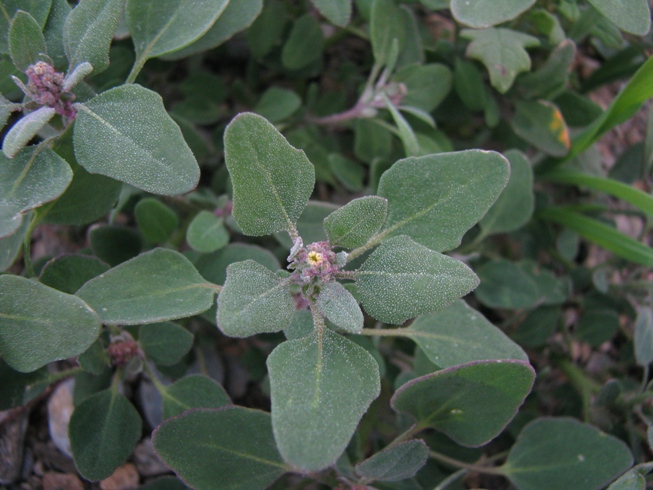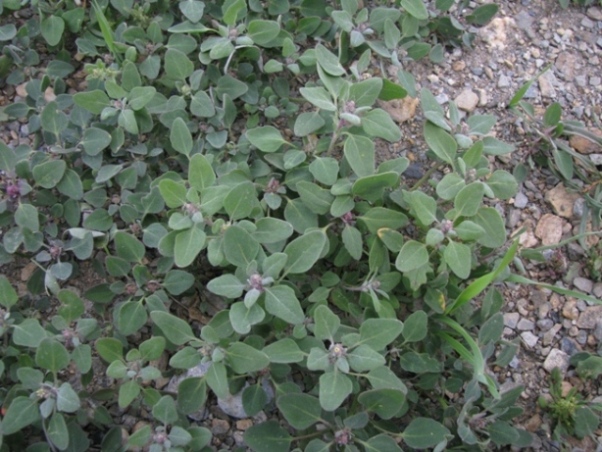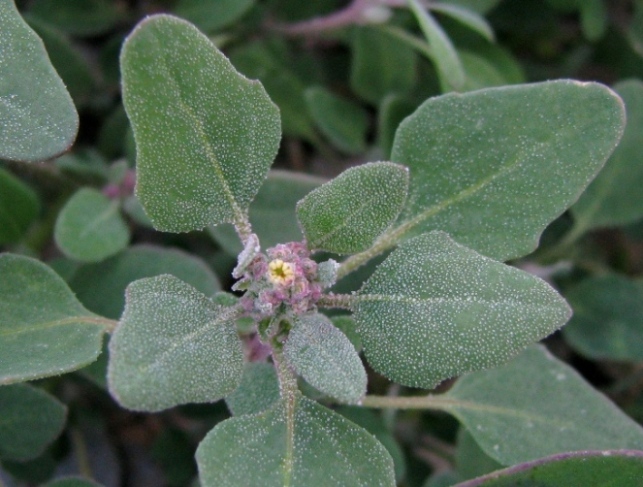Chenopodium karoi (Murr) Aellen, Repert. Spec. Nov. Regni Veg. 26: 149 1929. (Syn: Chenopodium album subsp. karoi Murr; Chenopodium prostratum Bunge ex Herder [Illegitimate]; Chenopodium prostratum subsp. karoi (Murr) Lomon.); ID request-051011-PKA3: 9 posts by 5 authors. Attachments (3) Small Herb from “Tsomoreri lake wetland, Ladakh”. Date/Time: 13-09-2011 / 05:00PM Location: Tsomoreri Lake wetland, Ladakh (Altitude: approx: 15075ft) Habitat: Wild Plant habit: Herb Chenopodium album, a leaf-vegetable, I think. Yes May be Chenopodium album this one is some species from genus Chenopodium, probably C. karoi, but to determine it for sure one needs the fruits, which are not visible on the photo. I am in agreement with Miroslav’s comments but would like to add some comments. I have not looked closely at Chenopodiums in my own country nor Ladakh’s. So C.karoi probably is a good suggestion. It is recorded from Ladakh (as is C.album). Chenopodium is a large and difficult genus. Yes, fruits can, for some species be essential to be certain which species but even if the specimen photographed by Prashant had been in fruit, sufficient detail could not have been seen. Most cameras cannot show such detail. Often, one either needs to examine the seeds fresh “in the field” or take a pressed specimen which can be examined later using a binocular microscope. In ‘New Flora of the British Isles’ Stace comments about the genus, ” vegetatively extremely plastic, especially in habit and leaf shape…. testa sculpturing important and sometimes essential for identification It can be examined under more than 20x after removal of the pericarp, which may be effected either by rubbing in the hand or sometimes only after boiling and dissection. The orientation of the seed is important”. In ‘Flora of the British Isles’ the authors’ comment, “markings on the testa of the seeds provide valuable specific characters”. Requiring examination of seed surface at more than x20 is beyond the power of most hand lens and camera lenses, so specimens are required – which present issue of permission to collect such pressed specimens. I have yet to attempt this with UK specimens of Chenopodium. Stewart listed 7 Chenopodium species for Ladakh incl. C.prostratum (with C.karoi and C.album subsp. karoi as synoynms) Dickore & Klimes list 14! They describe C.album and C.botrys from a survey in part of what they describe as lower Ladakh. I am grateful for any suggestions identification-wise for Chenopodiums found in Ladakh – some, like C.foliolosum are usually distinctive enough. |
Chenopodium karoi
Updated on December 24, 2024



